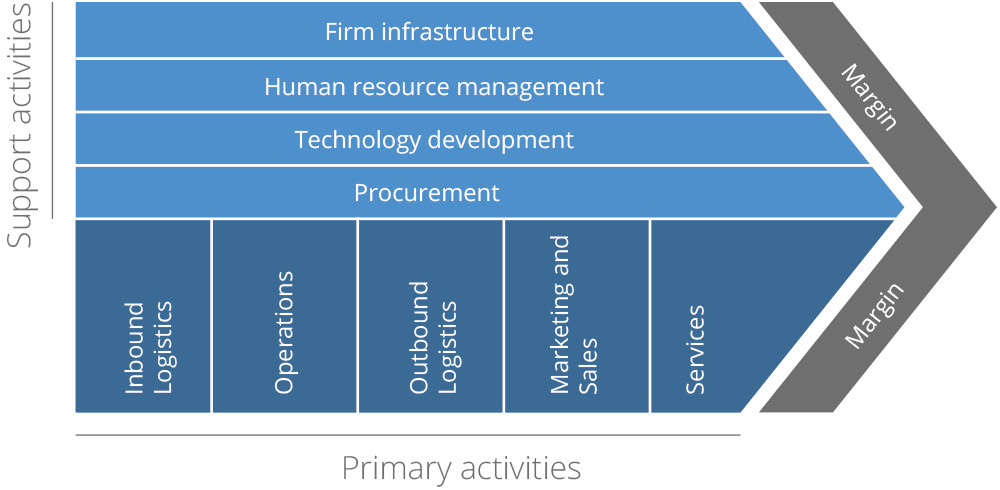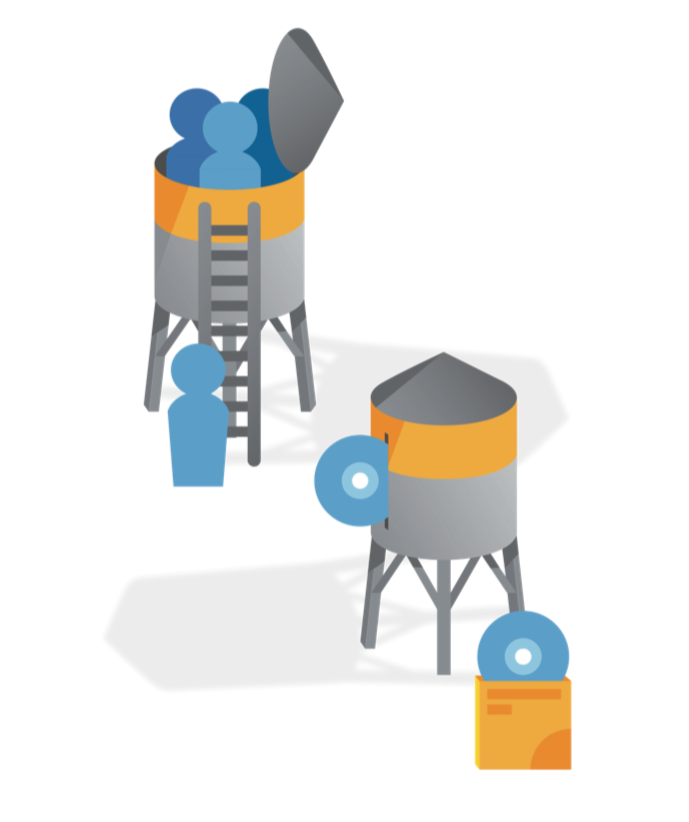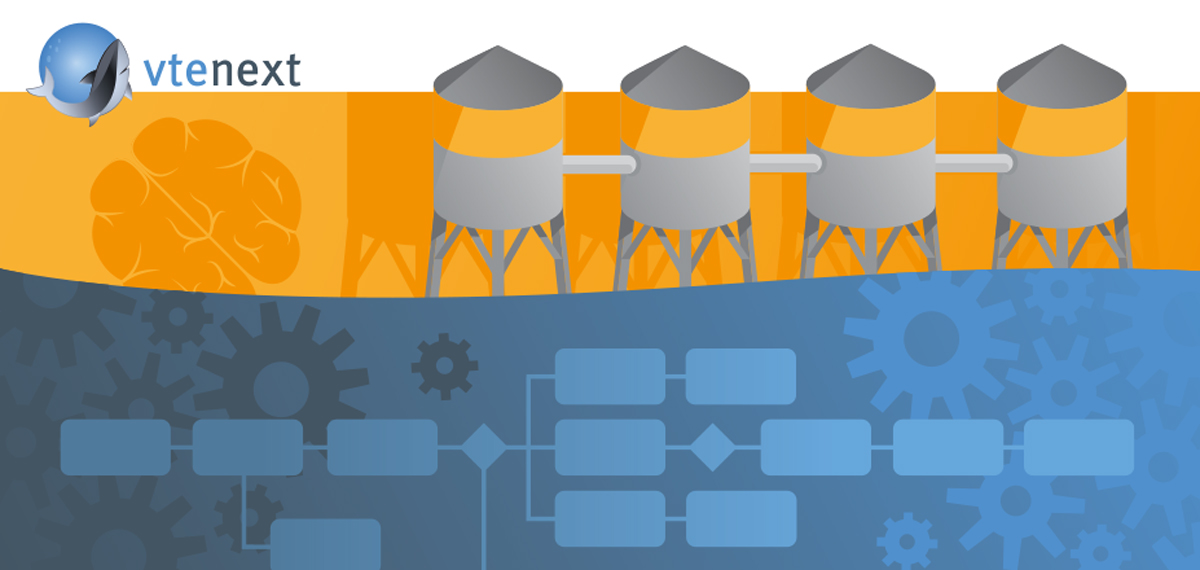Machine Learning is now everywhere. Perhaps the concept is still new to some, but it has already a huge impact on our daily routine. When we use Alexa, Amazon, Google Home or voice assistants on our smartphone like Siri, Machine Learning technology simplifies our life. Who hasn’t searched Netflix or Sky for advice on which movie to watch? Recommendation systems, based on Machine Learning, have certainly contributed to influencing our decisions.
Many companies have started using Machine Learning for online customer support, intelligent personal assistants or process automation.
A business process is the set of related activities that are carried out within the organization aimed at achieving a goal. These activities create value by transforming resources (process input) into a final product (process output).
An effective and efficient process creates value because it is able to meet the needs of its customers.

Porter’s Value Chain today
When it comes to business processes it is important to start from the classification theorized by Michael Porter in 1985. Porter classifies processes in:
- primary processes that directly create a value recognized by the customer, such as those related to production, logistics, marketing, sales and services;
- secondary (or support) processes are used to “support” primary processes and usually concern the areas of administration, finance and control, purchasing and IT services.
To complete Porter’s structure, a third category has been identified: the control processes (also called strategic or managerial) that drive the Quality Management System dictating the direction in which it must strive. Among these we find: the review of the Quality Management System, the definition of the organization’s goals, the measurement of results, the development of strategies, HR management, etc.

Why CRMs business processes are important in the creation of value
Corporate CRM processes represent the part of processes generated by the relationship with the customer.
In fact, when the customer makes a request, procedures are developed within the company: these can however change according to external factors that influence a corporate CRM process, generating stress due to the company’s inability to manage exceptional situations.
When the customer forwards a request several procedures within the company begin, that can change according to severla external factors. Those changes can cause delays or anomalies due to the company’s inability to andle exceptional situations.
There may be practices considered “special” because they concern a more important customer, or a new product / service that few know how to manage: this stress has a certain impact both within the company (abnormal tasks to be performed, delays in work rhythms) and in customer satisfaction, thus causing significant economic and, why not, image damages.
In order to face this type of problems, the “silos organizations” react with different strategies:
1) To cope with the stress produced by the processes and the increase in requests, one of the most adopted solutions is the increase in staff, who at the beginning will apparently solve the problem but in the long run it will significantly increase the chaos within the company.
2)Another strategy often applied is the purchase of solutions to improve productivity within the department, but it is still a solution limited to only one part of the company, limiting everything only to the silos in question.
3)The organization can also opt for a review of company procedures, adhering to the certifications required by the market to modify or improve its processes.
However, this is a strategy that adds numerous procedures within the company, and if these are not supported by the creation of digital processes,  the corporate bureaucracy will come out terribly burdened. In this case, companies can nominate a process owner: in this way it is the owner itself that supervises its correct execution but, at the same time, other superstructures are introduced without the relative managers having a real intervention power, creating further stress and damaging the organizational fluidity.
the corporate bureaucracy will come out terribly burdened. In this case, companies can nominate a process owner: in this way it is the owner itself that supervises its correct execution but, at the same time, other superstructures are introduced without the relative managers having a real intervention power, creating further stress and damaging the organizational fluidity.
Creating a corporate CRM project, on the contrary, means considering the customer-oriented processes within the entire organization, “drilling” the departmental silos.
This must begin from a careful analysis of the dynamics of business management, which can no longer take place with traditional methods of analysis: Process Mining is a highly innovative activity that uses Machine Learning to faithfully map these processes, evaluating their effectiveness with respect to the desired outputs, efficiency with respect to execution times, the possibility of improvement and the possible union with other processes in order to avoid redundancies.
Why create a Corporate CRM project with Machine Learning?
To support corporate CRM processes the use of Machine Learning is very useful, in particular regarding the possibility to improve the executon of individual tasks: in every process there are some factors that “condition” the execution of a specific task, these conditions can be certain or related to a certain probability of occurrence. Machine Learning allows to greatly improve the validity of forecasts by giving important support to those who have to make decisions. For example, Machine Learning allows to identify with a high percentage of reliability the customers who are about to leave the company.
To better manage a corporate CRM system, it is therefore necessary to have a CRM software that can manage customers or potential ones, improve the retention and reduce the waste of time of the company’s marketing activities.
Machine Learning is alreday a reality in vtenext
With the latest release, we have natively integrated a Machine Learning engine into vtenext and, currently, we are helping several partners to make the best use of it. Do not miss the next article where we will talk about how this technology is actually used to optimize and automate CRM processes!
